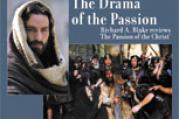Click here if you don’t see subscription options

Resurrection Faith
Many thanks for the fine article by John W. O’Malley, S.J., on Anna Katherine Emmerich and the Mel Gibson film (3/15). His historical sketch of the Passion tradition prompts two thoughts regarding the relationship between that tradition and the post-Vatican lI emphasis on the Resurrection. That emphasis makes sense theologically, of course, but liturgically it has generated zingy church songs (I hesitate to call them hymns) in which we Catholics now celebrate ourselves as the finger-snapping people of God who, it seems, are so lucky to know that God loves us, thanks to our Resurrection faith. Fortunately, that is hard to do during Passion Week, one of the few times a Catholic is likely to hear a classic hymn in Latin. It also occurs to me that unlike Good Friday, or for that matter the Jewish Day of Atonement, Easter, which (as we might say) celebrates the fact that the last words of Jesus on the cross were not God’s last word, must compete with chocolate bunnies, egg-rolls, pagan sunrise services and other insipid rites of spring. Without the somberness of Passiontide, Easter these days would be unbearable, just as Good Friday without Easter would be meaningless.
Kenneth L. Woodward





I believe that I will see the bounty of the Lord (Ps 27:13)



Compassionate Critic
Thanks to Richard R. Gaillardetz for the kind things he said about me and others in Do We Need a New(er) Apologetics? (2/2). I am pleased that he can appreciate the love and passion of someone’s work, even as he disagrees with that person’s methods. I would find few things so valuable as the insights of such a compassionate criticif only he would support his criticism with evidence that corresponds to something I have actually done.
I understand the problem of space limitations. But Professor Gaillardetz should not make assertions, like placing me at the far right of the contemporary Catholic theological continuum, without providing some example of the work that would situate me so far to starboard. (I honestly cannot figure out what that might be.)
Mr. Gaillardetz does mention two titles of my works, both of which were published well over a decade ago. Since then I have published four books with Doubleday, three more in the Catholic press and six volumes of the Ignatius Study Bible. He shows no awareness of these. My most recent book bears a warm endorsement by the former vice-rector of the Pontifical Biblical Institute in Romehardly an immoderate man, a Jesuit who has taught there for some 40 years.
Finally, I would like to respond to Mr. Gaillardetz’s only specific criticism. On the basis of listening to one tape series, he accuses me of having avoided studying the textual history of Dei Verbum and of focusing exclusively on the final text. One might respond that only the final text is binding. But I need not do that. In the very series Mr. Gaillardetz mentioned, I was arguing, in fact, not from the final text but from the textual history, which I discussed in great detail, based on the accounts of Cardinal Augustin Bea, S.J., and others. The textual history made my case far better than any ahistorical reading could have done.
Scott Hahn

